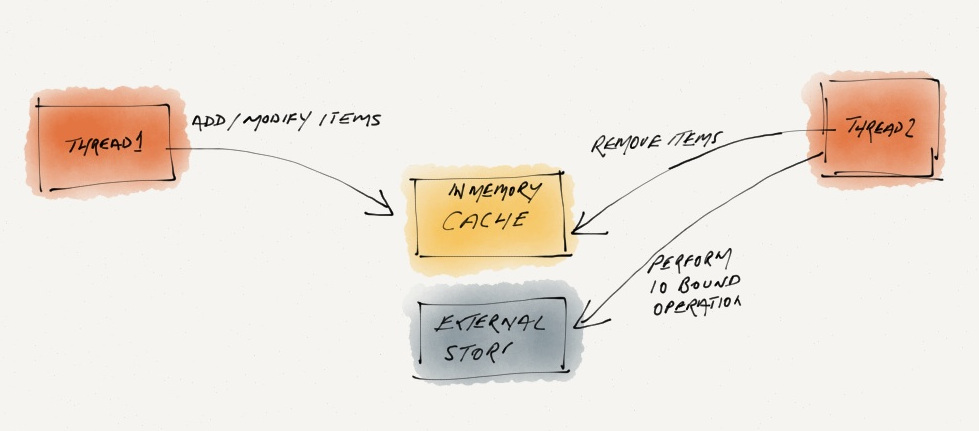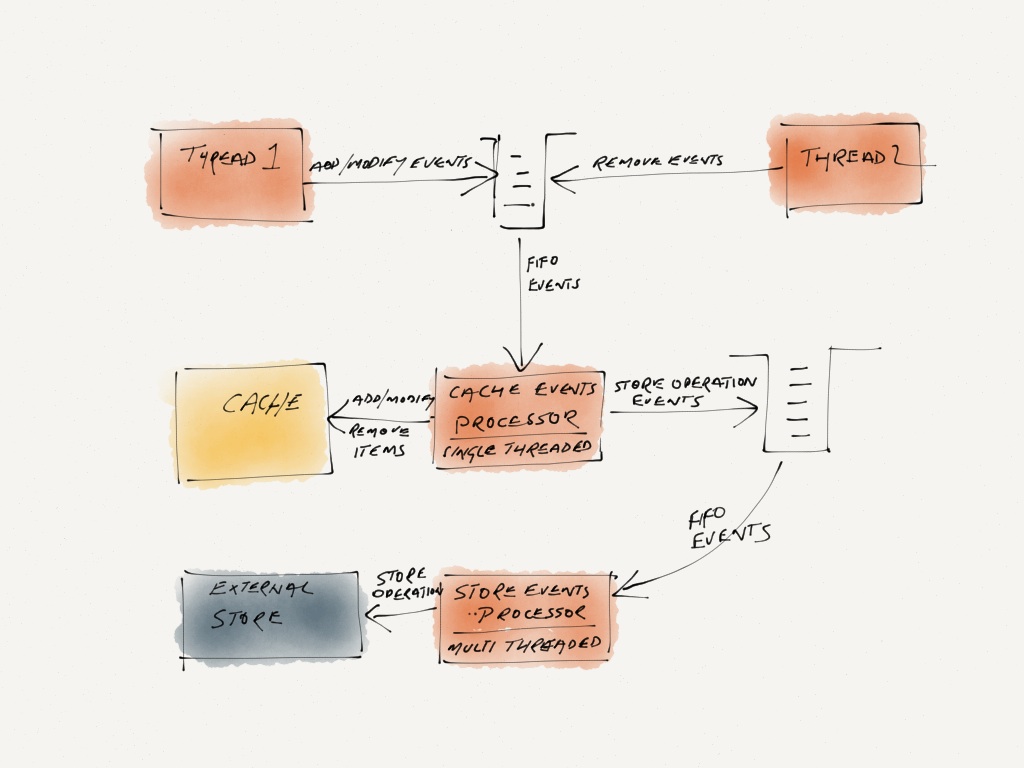
- By Liz Baker
- ·
- Posted 14 Feb 2023
Rubber Ducking
So, what is Rubber Ducking? Remember when it was the norm to go into the office, daily, and we were able to to easily talk out loud to the person..

The first rule of using locks for thread synchronisation is, "Do NOT use them!". Recently I saw an implementation that made heavy use of locks to synchronise access to a shared cache between two threads. The overall approach is explained in the diagram below:

Why not do the whole thing in a single thread? Well! the operations to the External Store are very time consuming and Thread-1 does not need to wait for them. So how do you solve this without using lock-based synchronisation?
The operations to the cache are very quick and can be done in a single thread. These operations are coming from multiple threads. We can funnel them through a single thread by using a thread-safe queue as explained in the following diagram:

Although this solution looks more complicated, the key advantage is that no low-level thread synchronisation is needed. Most good programming languages already provide thread-safe queues. Also, you can scale up using a thread pool for the operations to the external store.
Note: in both of the above approaches we need to ensure that the cache does not grow indefinitely. In case of the queue based approach we can use a a queue that blocks after a maximum capacity is reached. In case of the lock based approach the cache itself will need to block.

So, what is Rubber Ducking? Remember when it was the norm to go into the office, daily, and we were able to to easily talk out loud to the person..

When designing applications for the cloud, irrespective of the chosen platform, I have often found it useful to consider four specific topics during..

Mocking is still a point on contention among TDD practitioners. The biggest complaint is that when we use mocks the tests end up knowing too much..
Join our newsletter for expert tips and inspirational case studies
Join our newsletter for expert tips and inspirational case studies